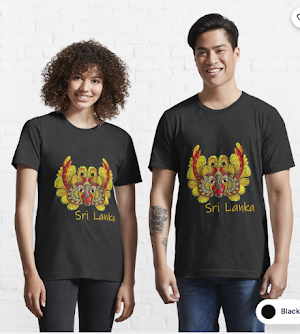Vannam
The word "vannam" comes from the Sinhala word "varnana" (descriptive praise). Ancient Sinhala texts refer to a considerable number of "vannams" that were only sung; later they were adapted to solo dances, each expressing a dominant idea. History reveals that the Kandyan king Sri Weeraparakrama Narendrasinghe gave considerable encouragement to dance and music. In this Kavikara Maduwa (a decorated dance arena) there were song and poetry contests.
It is said that the kavi (poems sung to music) for the eighteen principal vannams were composed by an old sage named Ganithalankara, with the help of a Buddhist priest from the Kandy temple. The vannams were inspired by nature, history, legend, folk religion, folk art, and sacred lore, and each is composed and interpreted in a certain mood (rasaya) or expression of sentiment. The eighteen
classical vannams are gajaga ("elephant"), thuranga ("horse"), mayura ("peacock"), gahaka ("conch shell"), uranga ("crawling animals"), mussaladi ("hare"), ukkussa ("eagle"), vyrodi ("precious stone"), hanuma ("monkey"), savula ("cock"), sinharaja ("lion"), naga ("cobra"), kirala ("red-wattled
lapwing"), eeradi ("arrow"), Surapathi (in praise of the goddess Surapathi), Ganapathi (in praise of the god Ganapathi), uduhara (expressing the pomp and majesty of the king), and assadhrusa (extolling the merit of Buddha). To these were added samanala ("Butterfly"), bo (the sacred bo tree at Anuradhapura, a sapling of the original bo tree under which Buddha attained enlightenment), and hansa vannama ("swan"). The vannama dance tradition has seven components: dog dance, cat dance, lion dance, ostrich dance, parrot dance, etc.












Ela malli wade. Digatama karagena yanna.
ReplyDelete